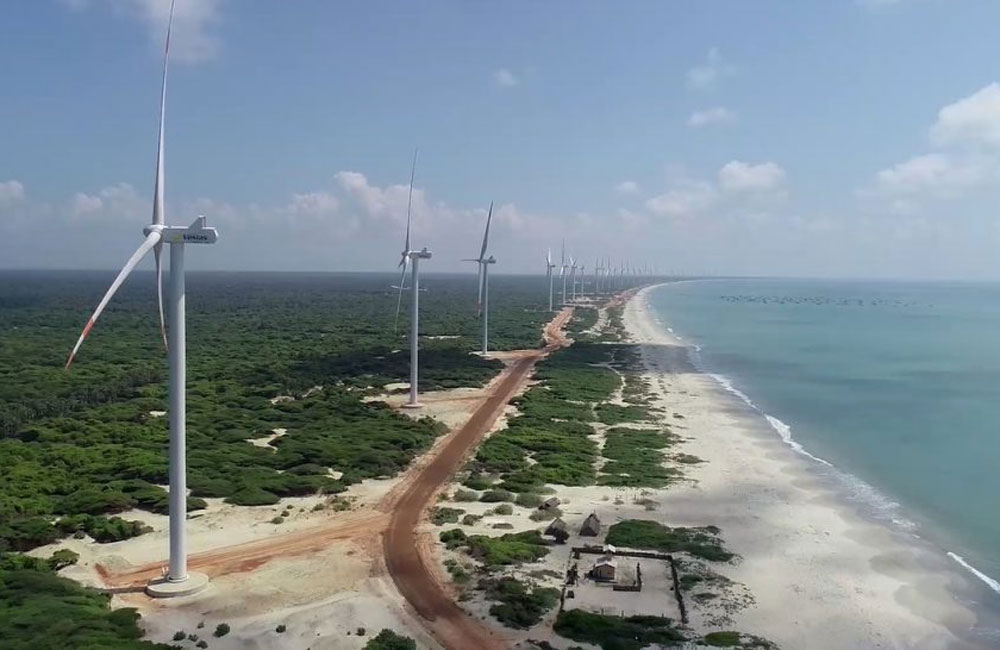A major row has erupted in Sri Lanka’s north-western coastal region as the government reveals it will proceed with only three private-sector wind power installations on Mannar Island — and no further expansion amid sustained local protests and delays.
According to the official cabinet decision, the three projects are:
- The Thambapavani Wind Farm (also known as the Mannar Wind Farm Phase I). Owned by Ceylon Electricity Board (CEB) and partly funded by Asian Development Bank (ADB), it provides 103.5 MW of capacity and was built at an estimated cost of about US$135 million (ADB loan) to US$200 million in total. It has been connected to the national grid since December 2020.
- The Windscape Mannar project by Ceylex Renewables (Pvt) Ltd. (Liege Capital Holding) in which a 20 MW plant is planned; investment amounts of about LKR 6.5 billion (~US$ 30 million) have been floated.
- The forthcoming 50 MW plant awarded to Hayleys Fentons Ltd. via its subsidiary HayWind One Ltd.. A US$ 50 million investment, secured through competitive bidding at a rate of 4.65 US cents per kWh, was announced in May 2025 and is expected to enter the grid within 18 months.
Despite this pipeline, the government has delayed implementation and clarified that no additional wind projects will be initiated on Mannar Island beyond these three. The decision follows continuous protests mounted by island residents and environmental groups, who cite threats to local livelihoods, protected ecosystems (including migratory bird routes) and inadequate community consultation.
While Thambapavani is already operational, the other two private-sector projects have faced delays. The Windscape Mannar 20 MW project is slated for December 2025 start, and the HayWind 50 MW unit for December 2026 according to government documentation.
However, in light of intensifying local opposition, the government under President Anura Kumara Dissanayake has mandated that no project may proceed without explicit consent from the island’s inhabitants. Cabinet Spokesman Nalinda Jayatissa stated that public concerns on environmental and social issues were taken “into consideration”.
The situation remains tense: the initially larger scheme by Adani Green Energy for a US$ 442 million, 250-MW wind-farm on Mannar was abandoned earlier this year after tariffs became contested and local resistance mounted.
Analysts say the delays and partial roll-out are undermining Sri Lanka’s ambition to scale wind power, particularly on resource-rich Mannar Island, where wind conditions produce a plant-factor over 40 %.
With only 123.5 MW (103.5 + 20) confirmed and 50 MW pending, the island is far from the originally planned 300 MW plus from private and public partnerships.
In sum, while Sri Lanka moves ahead with three wind power schemes on Mannar, the concrete rollout remains hindered by environmental and community opposition and the government’s insistence on consent has created fresh uncertainty about delivery timelines, investment flows and grid-integration of these renewable assets.

Leave your comments
Login to post a comment
Post comment as a guest